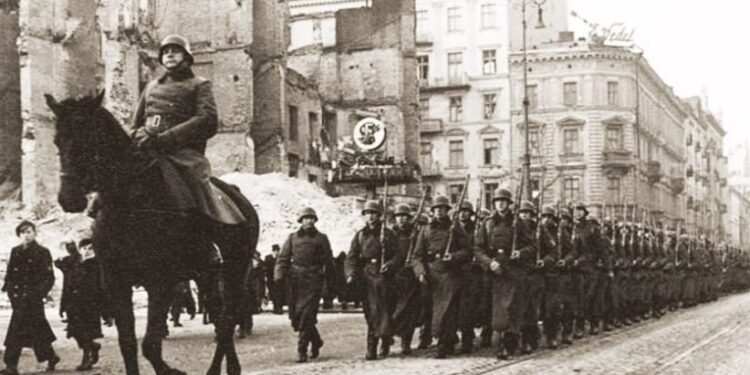On this day in 1939, Poland formally surrendered to German forces after weeks of fierce fighting, sealing the first chapter of the Second World War. The fall of Warsaw and the capitulation of Polish units underscored the scale of Germany’s military power and exposed Europe’s vulnerability to Hitler’s expansionist ambitions.
The German invasion
The invasion of Poland began on 1 September 1939, when Nazi Germany launched a lightning assault under the doctrine later known as Blitzkrieg. German forces used tanks, aircraft, and mechanised infantry in rapid coordination, overwhelming Poland’s defensive lines. Despite strong resistance in certain regions, the sheer speed and firepower of the German advance left Polish units struggling to regroup.
Soviet intervention complicates defence
Poland’s already fragile situation worsened on 17 September 1939, when the Soviet Union invaded from the east under the terms of the secret Molotov–Ribbentrop Pact. The dual assault meant Poland was effectively surrounded, with little prospect of reinforcement. Britain and France, who had declared war on Germany on 3 September, were unable to provide direct military aid, leaving Poland isolated in its fight.
The fall of Warsaw
Warsaw endured a prolonged siege, suffering heavy bombardment that devastated civilian areas. After nearly three weeks of intense fighting, the city capitulated on 27 September. The following days saw remaining Polish units surrender across the country, with the last organised resistance ending on 6 October. In total, Poland lost around 70,000 soldiers in combat, while more than 130,000 were wounded and nearly 700,000 were taken prisoner.
Strategic and human consequences
Poland’s surrender divided its territory between Nazi Germany and the Soviet Union, an arrangement that would shape the course of the war and Europe’s borders for years to come. For the Polish population, occupation meant widespread repression, deportations, and the beginning of one of the darkest chapters in European history.
Legacy of defiance
Although Poland was conquered, its government-in-exile continued to operate from London, and Polish forces regrouped abroad to fight alongside the Allies in campaigns from Britain to North Africa. Within occupied Poland, resistance movements quickly emerged, ensuring that Polish defiance never fully ended.
REFH – Newshub, 27 September 2025



Recent Comments